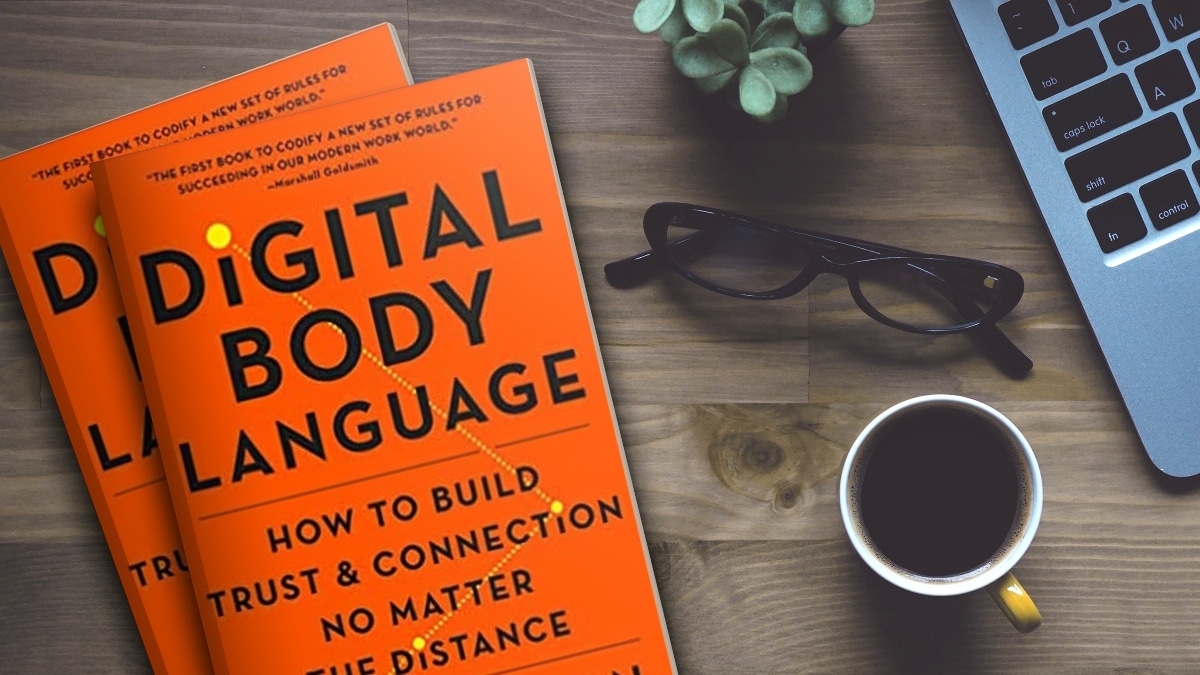A very good time to be reading this book. This book is all about how we interpret digital signals where body language is not available. After 3 months in lockdown and with remote working still part of our working lives, Digital Body Language by Erica Dhawan explores the dos, don’ts, and insights into the differences in digital language cues. This book is not only useful in providing a resource for people to hone in on their digital and remote communication, but to understand others and avoid misinterpretation.
Misinterpretation of digital communication is common due to both the quantity and content delivered without the traditional body cues we look for. In physical communication we add interpretation of eye contact, facial expressions, volume, tone, and stance to the message that is being conveyed. Dhawan’s thesis is that if we can find similar cues in digital communications it will reduce anxiety, improve well-being, and productivity.
Overview
The book is presented in three parts. The first explores digital body language expressions and drivers. How we can convey and build trust, inspire engagement, express excitement, and convey urgency are some of the areas used as useful examples of the difference between physical and digital communication. This section also unpacks our fraught relationship with full stops, exclamation marks, and question marks. This was eye opening for me as it identifies gender differences in how the use or overuse of these is interpreted.
Dhawan frames these issues usefully as: punctuation expresses emotion, time of response signals respect, and the medium used indicates priority. We can use and learn how others use punctuation and emojis to convey warmth or lack of warmth. The time we give to reply to communication, though this varies per medium, can be used to convey respect, and the medium we use compared to the content being communicated is an expression of how important the communication is being delivered and expected to be received.
The second part of the book looks at Dhawan’s 4 Laws of Digital Body Language. These are presented clearly and contain exercises and table guides that give the book a “workbook” and resource feel. Something to keep at your desk when you get a confusing email or want to know how to get your point and feelings across to an important client.
Law 1: Value Visibly
In physical communication we are more likely to express gratitude and appreciation. It is an important way to end a communication, one that we make sure there is time for. However, in the digital world, brevity often forces detail to take priority over expressions of value. Value visibly means to proactively communicate how you value the contribution of your correspondent or zoom participant. Take aways here include “reading is the new listening”, taking the time to refer to the content you are responding to and the detail of the person you are responding to, including the spelling of their name. Secondly, “writing clearly is the new empathy”, is another expression Dhawan gives to compel us to ensure we do include all required details in our correspondence, and feel free to respond with questions to ensure clarity so that both sender and receiver understand each other fully to ensure the required result. Lastly, don’t forgot to actually express thanks by simply typing it in your message.
Law 2: Communicate Carefully
Think before you type is the key message here. It is important to consider your recipients and your position of relative power, what greetings and sign-offs are appropriate, what language and tone is appropriate, and what channel, length of content, and use of formatting is appropriate. Thankfully, Dhawan provides a “think-before-you-type” checklist and a channel reference guide to help us understand within each communication tool, when to use it, expected response time, and how to use (and not to use).
Law 3: Collaborate Confidently
This law drives clarity and consistency in understanding between individuals, particularly within a team working on a project. It encourages regular check ins and requests for clarification. It recommends a collaborative understanding is sought from whoever is required to get a project done under the parameters required, especially when meeting deadlines. Misunderstandings lead to confusion, which leads to priority shifts and project goal abandonment. Dhawan recommends setting explicit goals and communicating regular checkins. A particularly useful approach is to define what success looks like in terms of timeframes and expectations.
Law 4: Trust Totally
Trust totally means to create an environment of safety in digital communications. Demonstrating vulnerability and culpability in an open way leads by example. Being free to identify your own shortcomings and make them open for others to find themselves a place in what is being expressed for the task at hand. This acts as an invitation to others and empowers them to do the same.
The last section of the book explores how communication is expressed and received in terms of different gender, cultural backgrounds, and generations. I found this section very interesting, in a number of areas, including how emojis can mean different things in different countries, how the use of exclamation marks are received differently between women and men, and how the temptation to use modifying language can alter the power balance between sender and receiver, and result in a loss of leadership perception. The book provides a few tips in using acronyms and email subject lines and content to make clear what is required from the correspondence in order to eliminate misinterpretation.
Final Thoughts
Digital Body Language is the right book at the right time as remote work is here to stay for many organisations. Remote communication between company and client, supplier, or partner has even been thus in the majority of these relationships. Erica Dhawan shines a unique light on how we can communicate, and what we can do to improve the way we communicate. It reads like a business book and feels like a handbook, very useful and readily applicable to the modern business world. One to keep as a resource on your desk, perhaps to consult before pressing SEND!




